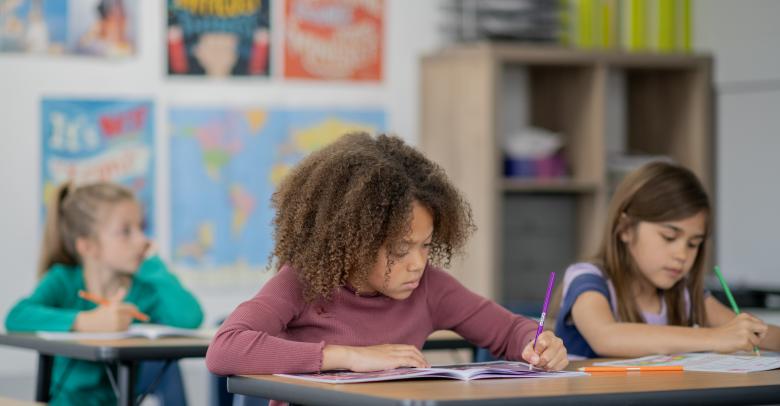Dr. Martin Luther King Jr. played a key role in The Civil Rights Movement from the mid-1950s until his assassination in 1968. Inspired by advocates of nonviolence such as Mahatma Gandhi, King sought equality for African Americans, the economically disadvantaged, and victims of injustice. Dr. King was awarded the Nobel Peace Prize in 1964 and is remembered each year on Martin Luther King Jr. Day, a US federal holiday since 1986.
5 Ways to Celebrate Martin Luther King Jr. in the Classroom
Here are a few activities and learning exercises you can use in your classroom to honor Martin Luther King Jr.’s life and continue his legacy of justice and respect for all.
Read a Picture Book
To introduce young children to Dr. Martin Luther King Jr., read a picture book about his life for storytime. A Picture Book of Martin Luther King Jr. by David Adler is a beautifully illustrated book featuring a history of Dr. King’s childhood during the Jim Crow era. Designed for kindergartners through third graders, this book comes with a CD for listening while reading.
Watch a Film
If your students are visual learners, consider the film Selma. Rated PG-13, you should use your discretion when showing the film—but for those middle and high school students who are approved to view it, it provides a detailed look at the history of the Civil Rights Movement. The storyline covers three months in 1965 when Dr. Martin Luther King Jr. led a march from Selma to Montgomery, which ultimately prompted President Lyndon B. Johnson to sign the Voting Rights Act of 1965.
For younger students, the animated feature Our Friend, Martin is an animated children’s educational film from 1999 about Martin Luther King, Jr. and the American Civil Rights Movement. Look for a DVD of the film at your local library or stream it for free on YouTube.
Check Out a Documentary
If you prefer documentaries to narrative films, you can find several about Dr. King. In particular, PBS offers a webpage featuring documentaries and recordings focused on Dr. Martin Luther King, Jr. To learn more about The Civil Rights Movement, consider showing older students the film Freedom on My Mind. This Oscar-nominated documentary is one of the most vivid and compelling video histories of the struggle for voters’ rights between 1961 and 1964.
Listen to a Speech
Taking your students directly to the source material is a great way to study history, and when celebrating such an amazing orator, what better way than listening to one of his speeches? You can find the full text of many of Dr. King’s speeches online, and video sites like YouTube often have remastered recordings.
Read or listen to a speech as a class, then discuss it. Try to unpack the meaning. Ask your students what the speech meant then, and discuss how Dr. King’s sentiments are still relevant today. Have them examine how the Civil Rights Movement has changed since the time of Dr. King and why these changes took place.
Volunteer
Rather than just talking about Dr. King’s life and message in the abstract, get out and make a difference. Let your students lead. Discuss where they see injustice and find a way to volunteer in your city or town. Depending on the cause you select, that may mean formal volunteering or simple random acts of kindness without going through an organized charity.
Regardless of each student’s age or ability, they can all help the world somehow. As Dr. Martin Luther King Jr. said:
“Everybody can be great, because everybody can serve. You don’t have to have a college degree to serve. You don’t have to make your subject and your verb agree to serve….You don’t have to know the Second Theory of Thermodynamics in Physics to serve. You only need a heart full of grace, a soul generated by love.”
Excerpted from “The Drum Major Instinct,” 1968
Black History Month Activities: Reflections on the Artist’s Voice






Leave a Reply